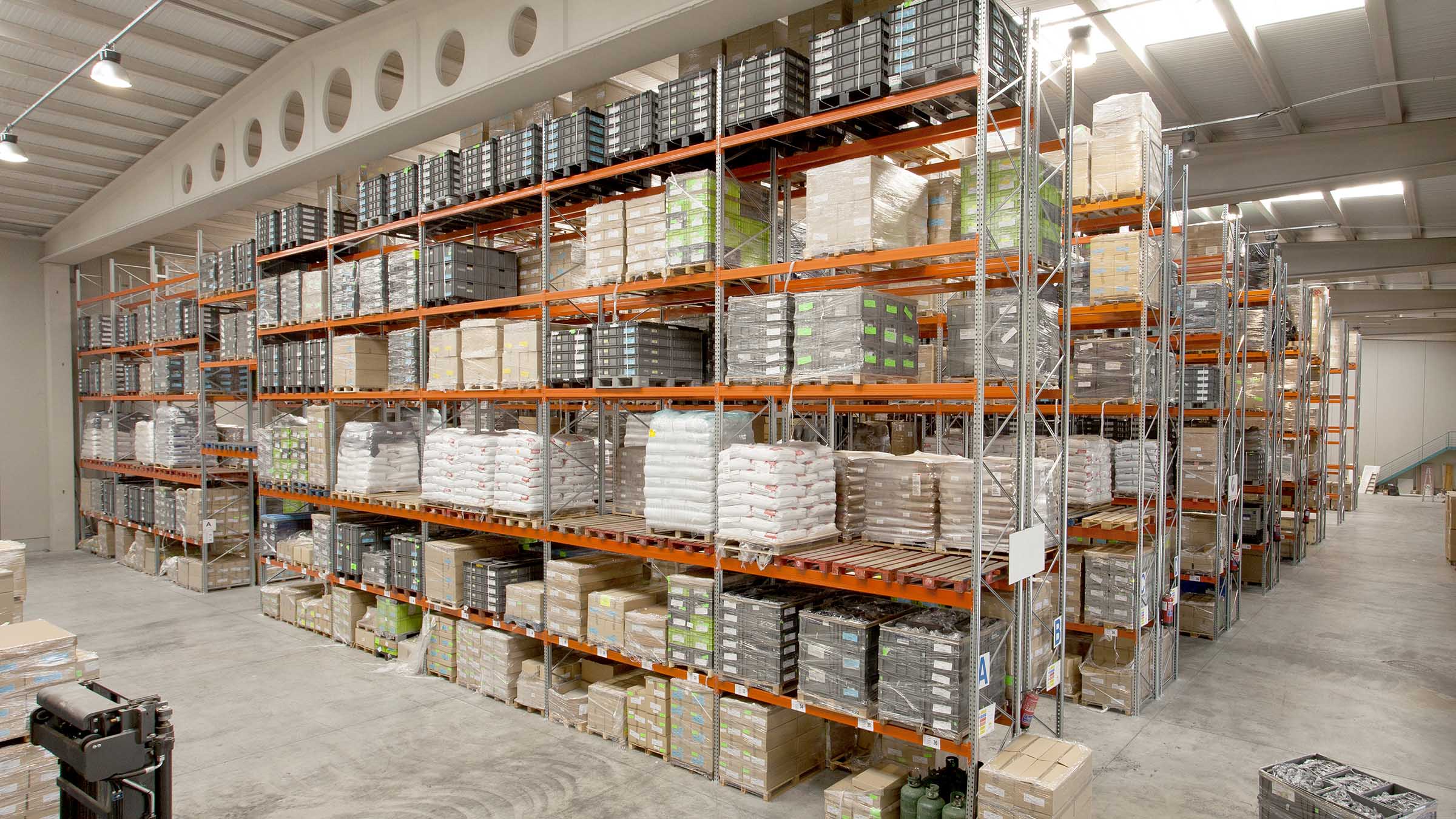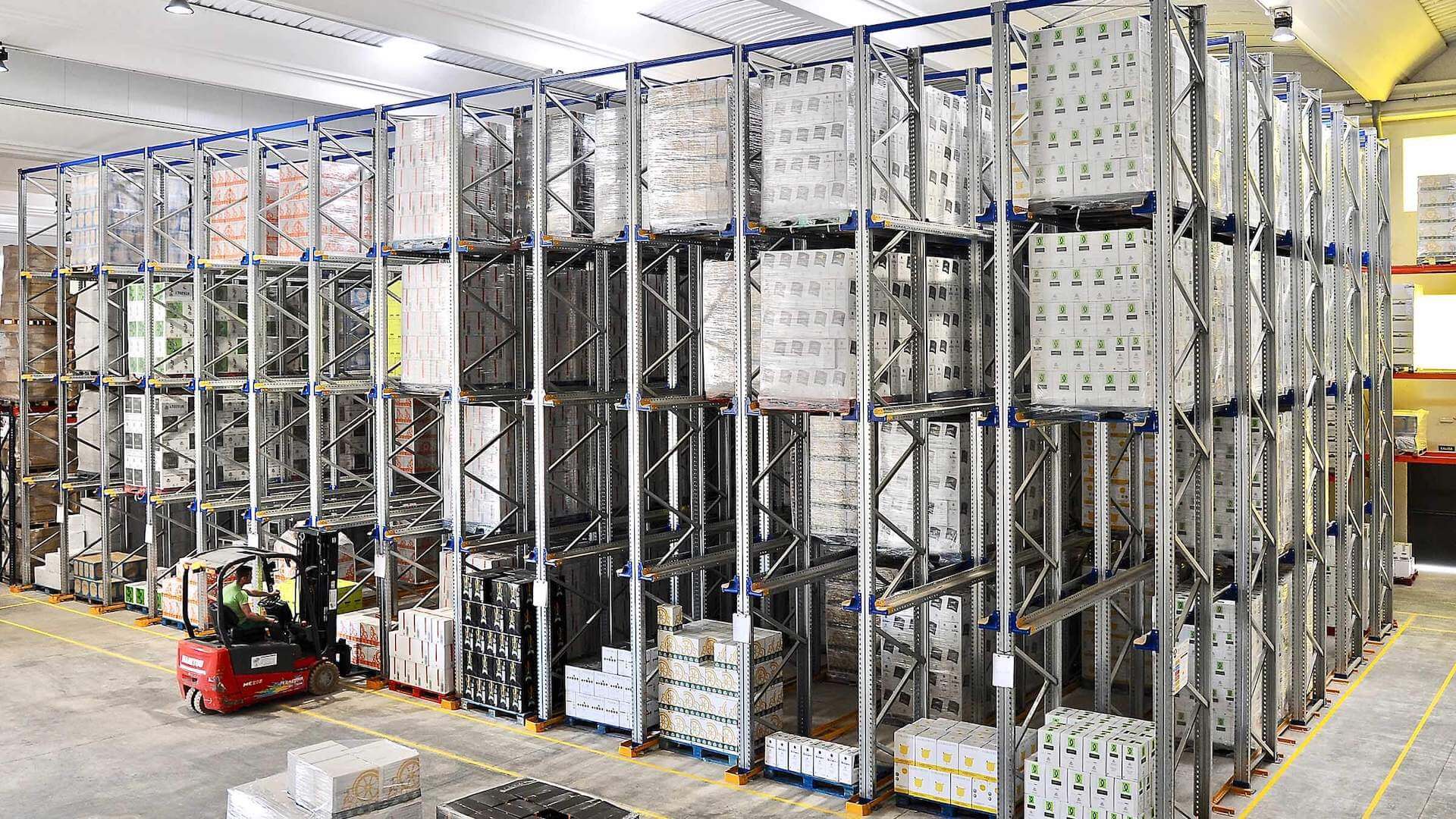Racking Systems for Food and Beverage companies

Industrial racking and storage systems for the food and beverage sector are designed to facilitate perfect product rotation that allows the inflow and outflow of goods from the warehouse in an agile and efficient way.
It is a sector with very diverse load units: different sizes, weights, expiration dates, cold storage requirements, etc. Combinations of different types of warehouse racking systems are usually installed in food and beverage warehouses to provide solutions for different product needs.
At AR Racking we have ample experience in solutions for the sector and have a range of storage systems to meet all the possible logistics needs of food and beverage warehouses.
Storage systems for the food and beverage industry

Smooth stock rotation
Considering the characteristics of the goods, storage systems in the food sector will have to ensure a correct and smooth product rotation. It is common to install systems that allow FIFO (First in, First out) stock management.

Direct access to the unit load: non-priority
Although it will depend on the company’s characteristics, generally in the food and beverage sector a large volume of stock is stored for each product reference, and therefore direct access to each unit load is not so important. In general, with food, the goods are more heterogeneous compared to beverages.

Cold storage solutions
If the goods to be stored must be kept at a controlled temperature in a cold store or freezing chamber, something very common in this sector, those storage systems best suited to such conditions will be installed.

Compact storage systems
Compact or multideep industrial racking solutions are a very interesting option in the food and beverage sector because they usually store few product references with a high volume of stock. Moreover, in the case of cold storage, these systems optimise the available space and volume to be cooled. However, it needs to be ensured that this compaction does not compromise the correct rotation of goods.

Characteristics of the food and beverage industry
The main characteristic of the food and beverage sector in terms of its logistics requirements is that the type of products produced, distributed and marketed have very delicate and special conditions.
Warehouse cleaning and hygiene
Food and beverages require hygienic and environmental conditions that make their protection and correct storage a priority, so that goods retain their ideal characteristics for sale and consumption.
In many cases, they also require that the cold chain not be broken in all phases of the supply chain, which represents a challenge beyond storage in the appropriate type of industrial racking.
Perishable products
The expiration date of these products generally means that the appropriate warehouse management method is FIFO (First in, First out), facilitating the perfect rotation of the goods and ensuring that the first product to be stored is the first to be shipped from the warehouse.
Furthermore, the food and beverage sector is constantly changing due to changes in society’s purchasing habits, which are increasingly demanding from a quality and deadline perspective.

AR Racking part of the British Frozen Food Federation (BFFF)
The British Frozen Food Federation is recognised for its commitment to excellence in the food industry, representing a broad spectrum of companies involved in the production, distribution and storage of frozen foods. With an extensive membership ranging from producers and distributors to logistics service providers, the BFFF plays a key role in strengthening food safety and promoting quality standards in the UK.
AR Racking positions itself as a key strategic partner for the future of the UK frozen food sector, committed to innovation, excellence and long-term success.
Recommended Racking Systems for Food & Beverage:
Some common storage systems for the food and beverage industry are:

Adjustable Pallet Racking
The most common and simplest storage system, adaptable to different types of loads. It allows direct access to all stored unit loads, facilitating good rotation of products such as food and beverages.

Narrow Aisle Racking
System very similar to adjustable racking, but more compact as work aisles are reduced. It also allows direct access to all unit loads and requires special forklifts for its operation.

Live Pallet Racking (FIFO)
Compact system for storing pallets, designed specifically for FIFO warehouse management.

Mobile Pallet Racking (AR Mobile)
In this system, the adjustable pallet racking structure is installed on mobile bases that allow the movement of the rows of racking to open a single work aisle. They are a good alternative for the food and beverage sector as they allow direct access to all unit loads, but with good space optimisation.

Drive in Racking (AR Drive In)
Compact system that makes the most of the available space and height of the warehouse by reducing work aisles.

Longspan Shelving
This is the most conventional picking system. It is an interesting solution in food and beverage warehouses with medium or light loads, and also in order preparation warehouses.

Carton Live Storage
Live pallet racking for storage of light loads. Its design with slightly inclined roller beds allows goods from the food and beverage sector to slide along the storage lanes, facilitating FIFO stock management.

Pallet Shuttle System
It is a semi-automated high-density storage solution that uses motorised pallet shuttles to move goods. It is a suitable system for cold storage.

Automated Pallet Warehouses
Warehouses with automated systems are a very efficient solution, which allows perfect rotation and fully optimises the available space. However, it should be taken into account that these are more complex and costly solutions.












